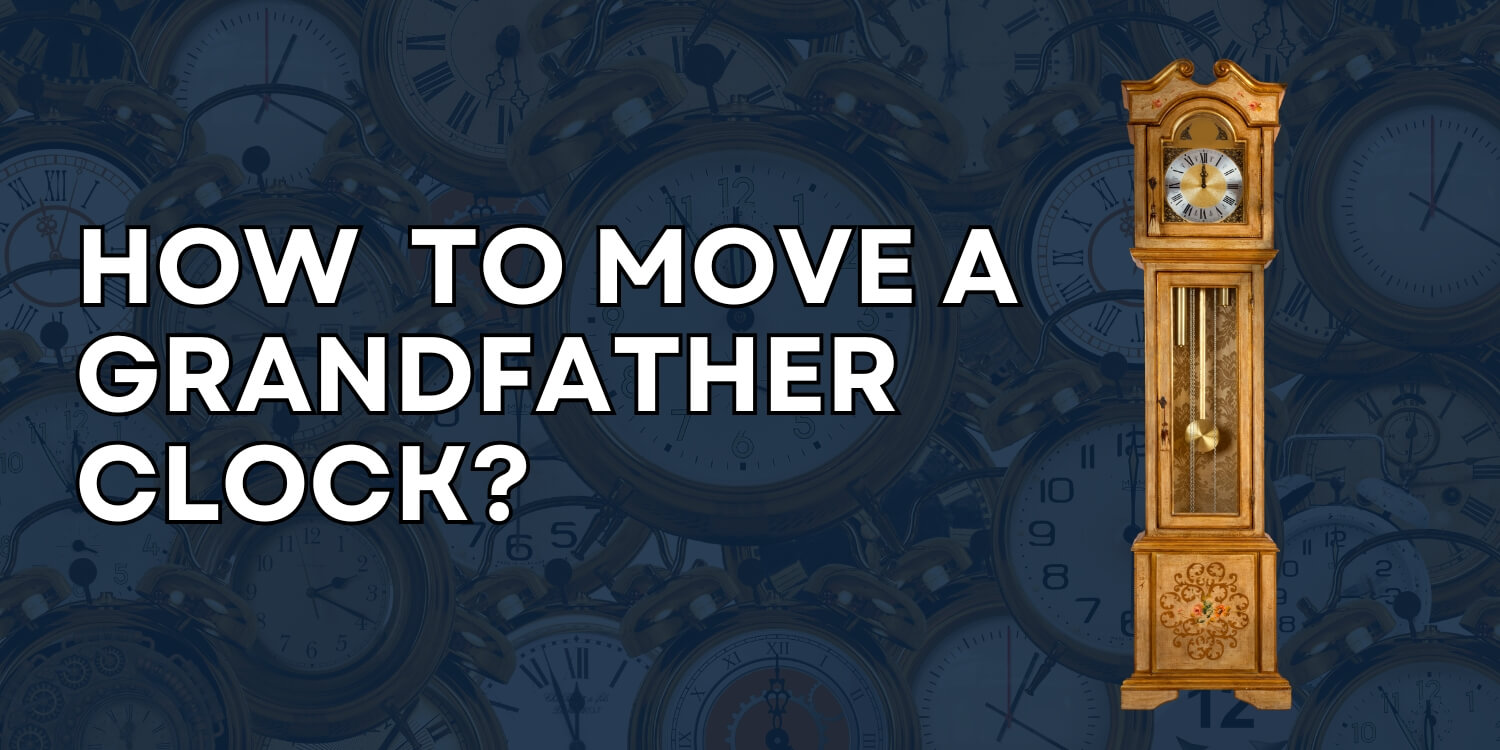Moving a grandfather clock is not as easy as it might seem. These beautiful timepieces are often family heirlooms, and they’re also delicate and heavy at the same time. If you’re planning to relocate one, whether it’s across the room or moving long distance, you need to take special care. In this guide, we’ll walk you through every step of the process in simple, easy-to-follow words.
Why You Need to Be Careful
Grandfather clocks have many moving parts inside them. The weights, pendulum, chains, and internal mechanisms are all sensitive to motion. If anything moves the wrong way, it can damage the clock or make it stop working. That’s why you can’t just pick it up and carry it like a piece of furniture. It takes some preparation.
Things You’ll Need
Before you begin, gather a few supplies:
- Gloves (to avoid leaving fingerprints or smudges)
- Bubble wrap or soft cloths
- Packing tape
- Ziplock bags (for small parts)
- A screwdriver (if needed for your model)
- Furniture blankets or padding
- A sturdy dolly (for moving it safely)
- An extra set of hands (don’t do this alone!)
Step-by-Step Instructions
1. Remove the Pendulum
The pendulum is long, thin, and delicate. To remove it:
- Open the front glass door.
- Carefully hold the pendulum at the bottom and lift it slightly to unhook it.
- Don’t twist or force it. Just gently lift until it comes loose.
- Wrap it in bubble wrap or a soft towel and set it aside safely.
2. Take Out the Weights
Most grandfather clocks have three weights hanging inside. They control different parts of the clock — one runs the time, one runs the chimes, and the other runs the strike.
- Use gloves so you don’t leave oils on the brass.
- Carefully lift each weight straight up and off its hook or chain.
- Wrap each one individually and label them if needed (left, center, right).
- Place them in a safe box or bag.
3. Secure or Remove the Chains or Cables
If your clock has chains:
- Pull the chains so they’re at the top.
- Use twist ties or rubber bands to keep them in place so they don’t swing or tangle.
- If the chains are removable, you can take them out and store them separately.
If your clock has cables:
-
- Wind the clock slightly so the cables are tight, but don’t overwind.
- Secure the cables using foam or cardboard to avoid them moving too much.
4. Protect the Clock Body
Now that the inside is safe, it’s time to protect the clock’s case:
- Close all doors (front and side panels) and tape them shut with painter’s tape or wrap them with plastic wrap to prevent swinging.
- Use furniture blankets or thick padding to wrap the entire clock.
- Tape the padding in place gently — don’t let tape touch the wood directly.
5. Lifting and Moving the Clock
Never try to move a grandfather clock by yourself — it’s tall, awkward, and heavy.
- Use a dolly with straps to lift the clock from the bottom, not from the middle or top.
- Keep it upright at all times. Don’t lay it down unless absolutely necessary.
- If you’re moving it to a truck, make sure it stands upright and is secured with straps to prevent tipping.
Tips for Long-Distance Moves
- If you’re moving the clock to another city or state, consider a professional moving company that has experience with antiques.
- Make sure the clock is properly insured during the move.
- Store the pendulum and weights in a clearly marked box so they don’t get lost.
Setting It Up in the New Place
Once you arrive at your new home, reverse the process carefully:
- Unwrap the clock and check for any damage.
- Place it on a level floor — if the clock isn’t level, it might not tick properly.
- Reattach the chains or cables if you removed them.
- Hang the weights back in their correct spots (left, center, right).
- Attach the pendulum by hooking it gently onto the leader (the swinging part).
- Give it a gentle push to start the tick-tock motion.
Be patient. Sometimes it takes a little adjusting to get it ticking just right.
When to Call a Professional
If your grandfather clock is extremely old, valuable, or sentimental, don’t take risks. A professional clock mover or antique expert will know exactly how to handle it without causing damage. The cost of hiring a pro may save you money in repairs later.
Final Thoughts
A grandfather clock is more than just a piece of furniture — it’s a piece of history. Taking the time to move it the right way keeps it working beautifully for years to come. With the right steps, a little care, and maybe some help, you can move your clock safely and stress-free.
Whether you’re switching rooms or switching states, now you know exactly how to move a grandfather clock the smart way.




